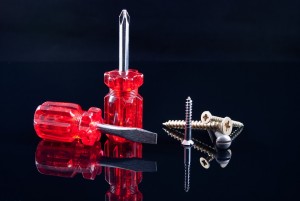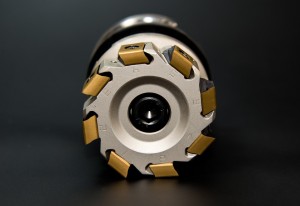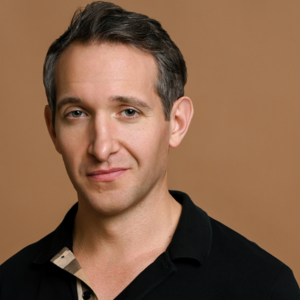Prototyping is one of the most exciting and creative parts of the product development process. Your prototype will be the first opportunity you have to see your invention realized fully in three dimensions. Only once you’ve started prototyping will you get a real feel for what works and what doesn’t, what needs to be changed and what you’ve hit out of the park. It’s a pivotal step on the journey from invention to successful product.
On this page we’ll talk about what prototyping is, what prototypes are for, and the different kinds of prototypes there are for different purposes. The first question, then, is: what is a prototype?
Prototype Definition
In the most basic terms, a prototype is simply a fully three-dimensional model of your invention or product that can be touched and interacted with by you (the designer), potential consumers, or prospective investors. Who will be handling the prototype and for what purpose will depend on the type of prototype, which we’ll cover down below.
Building a prototype is really the first time your invention will be introduced to the world. Prototyping is absolutely central to the invention process. It’s really not until you’ve actually had an opportunity to build a prototype that you begin to really know your invention.
Usually, the product design process will call for the creation of several different prototypes. Prototypes are important for patenting, troubleshooting, and for licensing or acquiring investors. They can also be extremely useful in soliciting feedback from potential consumers and generating a dialogue with the public about your forthcoming product.
The first step is creating a rough prototype.
Rough Prototype
You can think of the rough prototype as a sort of three-dimensional sketch of your invention. Most new inventions and product designs start off as drawings or sketches on paper. These days, this is usually followed by 3D modeling CAD design, which takes those initial sketches or ideas and translates them into a realistic digital 3D rendering.
The rough prototype is the realization of that three-dimensional image in actual physical space. The sole purpose of a rough prototype is to help you to really get to know your invention, to gain a better understanding of what it is that you are trying to accomplish, and what this thing will actually be like as a product.
- Begin with a written description of the invention. What is it’s purpose? What does it do? What are the features? How will it all be put together?
- Make a drawing (either by hand or a CAD design) that incorporates all those features. Pay attention to how the different parts will be connected and supported.
- Build an actual 3D model of that drawing — this is your rough prototype.
The rough prototype does not have to be pretty, and you should not be investing a lot of money into it. Think of it the way an artist or sculptor might think of using clay models — it is only a tool for you to develop a deeper understanding and appreciation for what this object will be; to have something which you can hold in your hands and really see.
Heck, you can even make it from clay if you want. You can really make it from anything — cardboard, papier-mâché, Lego blocks — anything that you have available to you that suits the purpose. You can find all sorts of materials at the local arts and crafts store, or just use what you have lying around.
The prototype is not supposed to be functional. We’ll get to that part later. At this point, you are just making a three-dimensional sketch.
Functional Prototype
The functional prototype is the next step in the process. This is the real meat-and-potatoes of the prototyping process, and is one of the most central parts of the product design cycle itself. The goal of the functional prototype is to create a working model of the invention. The point here is to really put your ideas to the test and see if they work in the real world. It is at this stage that your invention really comes to life.
Completing a functional prototype a major step in the invention process, as the functional prototype actually has to work. This is the stage at which flaws are realized and the design really gets worked out for the real world.
The functional prototype is not supposed to be an exact replica of the finished product. It doesn’t have to perform with the same level of functionality as the finished thing, but it does have to demonstrate how the moving parts will interact and how the whole thing will come together. You want the functional prototype to show that your design is actually capable of performing the task it was invented for.
One of the biggest differences between your working prototypes and the final product will be in the manufacturing method and materials. In most cases, you won’t be producing your prototypes using the same manufacturing technologies that you will eventually use for the final product, and you don’t need to be using the same materials. You just need to be using materials that will substitute for the finished product in terms of performing the function at hand.
For example, while your final product may call for glass or plastic paneling and rubberized grips, you can probably get away with wood and maybe some electrical tape in the case of your prototype. It doesn’t have to look good — it just has to work. Because you may have to go through several iterations of the prototype before you find the version that works, you’re probably going to want to work with cheaper materials than you intend to use for the consumer-ready end-product.
You’ll probably need work with others in order to build your prototypes. Make sure that before discussing the details of your invention with anyone you have them sign a non-disclosure agreement (we always include non-disclosure agreements when working with our clients). It’s a good idea to have built a functional prototype before you submit your utility patent application.

Final Prototype
The final prototype is the last checkpoint on the journey towards the final product. The final prototype should be as much alike as the end product as possible. It doesn’t have to be manufactured using the same processes, but it should make use similar materials and the design should match exactly that of the final product. It ought to be made from the same plans which will eventually be used to make the final product.
The primary purpose of the final prototype is to check the fitting and form of all the parts before you begin the actual production runs and tooling. This might seem like a hassle, and there might be a temptation to go right into full production. Avoid this temptation! Silly little mistakes can end up costing you big time once production begins in earnest, and the more diligent you are in your prototyping, the far more secure your investment will be later on. Make sure you get it right before you pull the trigger — measure twice, cut once.
If you are licensing your product, you will likely not need to produce a final prototype. You’ll want to demonstrate to potential licensors the feasibility of your product with a functional prototype, but they will likely want to have a say in the final aesthetics of the product anyways, and so you will probably not need to make final prototypes unless you are taking on the manufacturing and distribution yourself.
There is one final sort of prototype though that can be useful for those planning on licensing or for startups looking to manufacture, and that is presentation models.
Presentation Models
Presentation models are sort of like a hybrid of the other three types of prototype. Presentation models are tools used for investor presentations and fundraising, to help you license your product, or for focus testing and market research with potential customers. They need to look and feel good, but they don’t have to actually work.
The purpose of a presentation model is to show off your vision in three-dimensions and to generate interest in your audience. They don’t have to work like a functional model, but you also don’t want them to seem rough and unpolished like your rough prototypes. Whereas the rough prototype is like a sketch in three dimensions, a presentation model is like an actual tangible 3D rendering.
Not every project will call for presentation models. It depends on your marketing strategy, the nature of your product, and your budget. However, they can be valuable tools when used appropriately. Presentation models can be a great way to interact with consumers in focus testing, and can be used to create a dialogue with your potential customers about what they expect from a product, giving you a chance to gauge their attitude towards your product vision before you get too far along in the design process.
3D printing is again a very useful technology when it comes to producing high-quality presentation models that look and feel good and that can be produced in small batches.
Depending on your goal, presentation models can be made either before or after you’ve ironed out the details with a functional prototype. If you’re going is to do market research, you may want to make use of presentation models with your target audience earlier, so that you can incorporate their feedback into your design of the functional prototype. However, you could also use more polished presentation models to complement a rougher functional prototype in your presentation to investors or potential licensors.
3D printing and additive manufacturing now provide entrepreneurs with a range of cost-effective and rapid prototyping options that, depending on the nature of your product, can greatly reduce the lead-times and expense of producing high-quality functional prototypes and presentation models. Cad Crowd offers rapid prototyping services as part of our suite of CAD design and product development services for inventors.


